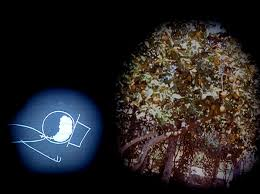
Writing Pitfall #4: Mundane Detail
 Writing Pitfall #4: Mundane Detail
Writing Pitfall #4: Mundane Detail
Reposted with permission from Write Divas
Back when I first started writing, I thought details were the meat and potatoes of my stories; the more the better is what I always thought. I had no qualms about writing the step-by-step of how my characters cooked spaghetti, how their shower routines consisted of lather, rinse, repeat with their specifically scented shampoo while their soap was a sliver of an inch thick and purple and slippery, or even how my characters put on their clothes: one article of clothing at a time while describing each article with mad detail. Hello, designer names!
I even joked with writing friends that we were better writers for having this monotony of detail. It made us more descriptive, and we painted clearer pictures for our readers. Yeah, that’s it. It was all for our readers, I said.
Nope.
In reality, what I thought was descriptive detail was in fact the dreaded mundane.
To quote Merriam Webster’s definition of mundane, “characterized by the practical, transitory, and ordinary.”
Here are some synonyms: everyday, ordinary, dull.
Basically, I was writing boring, everyday detail that probably bogged down my story more than propelled it.
Not convinced mundane detail is all that bad? You say, “Hey, Lauren. That mundane detail is what readers like to read. Readers really become part of the story that way.” You very well may be right. Many people view this as an opinion rather than the rule. Which is fine. What I’m trying to do for those mundane-loving people is share some insight they may have never really seen before.
Behold.
An example of mundane detail: We’ll take the spaghetti scene I wrote a long time ago.
Claudia opened the cabinet over the sink and took out the medium-sized metal pot. Dinner was going to be delicious tonight, she thought. Cooking for her new boyfriend was bound to impress the man. With a smile, she grabbed some dry spaghetti from the pantry and set it on the counter. Next, she filled her pot halfway with water and set it on the burner to boil, lightly salting the water for taste. Turning the burner on, Claudia bit her lip thinking of Jeb. She hoped he would be able to smell her meat sauce from the door when he came over later; the aromas mixing in the air were a sure way to the man’s heart. Getting down to it, she bent down and retrieved the handy skillet her mother gave her for Christmas and placed it on the stove, and then put her defrosted ground beef into a skillet she had on the counter and put it on the second burner on her stove, turning it on as well, so her noodles and meat about both were cooking at the same time. Claudia then started to chop some tomatoes . . . blah, blah, blah.
While this excerpt is big on descriptive detail, it’s very mind-numbingly dull and excessively long.
Claudia’s actions distract the reader. The flow of the section is now choppy with detail because it’s not simply written; it’s a rundown on her actions. The mundane details of her cooking dinner take away from the real meat of the story, which is that she’s excited to be fixing dinner for the first time for her boyfriend Jeb.
A better way to write this excerpt:
Dinner was going to be delicious tonight, Claudia thought. Cooking for her new boyfriend was bound to impress the man. With a smile, she put noodles on the stove to boil and set the defrosted meat in the skillet to brown. Claudia bit her lip thinking of Jeb. She hoped he would be able to smell her meat sauce from the door when he came over later; the aromas mixing in the air were a sure way to the man’s heart. After preparing the rest of the ingredients, she poured herself a glass of wine.
BAM! Simple and to the point while still describing Claudia’s actions and mood. She’s excited about her date, and you see the emotion she’s putting into her cooking.
So, dear writer, how do you fix your mundane addiction?
- Admit you have a problem. (This is important.)
- Get a second opinion and find a reliable proofreader or pre-reader who will be able to point out when you’re over describing.
- Learn to let go of the need to info dump tediously. You’ll find that once you can, your writing will be cleaner, flow better, and not drag.
- Balance the detail. Know your readers will appreciate detail, but over describing can dumb down a story, and you don’t want your readers to start skimming.
- Keep in mind what mood you want to set for your scene, if the mood and emotion are hidden behind too much detail, then you’re reader will miss what you’re trying to convey.
- Revise, Revise, Revise. If you went over your scene twice, go over it at least one, oh heck, five more times. If the detail is not pertinent to the story, take it out.
Remember, when you start to describe every detail of how Jane shaves her legs or how Dick chops wood, step back and really look at your scene. Figure out if you can cut detail but still keep the integrity of the scene. If you can, and you’re satisfied your readers can clearly picture your scene in their minds, you’re well on your way to writing a tight, concise story.